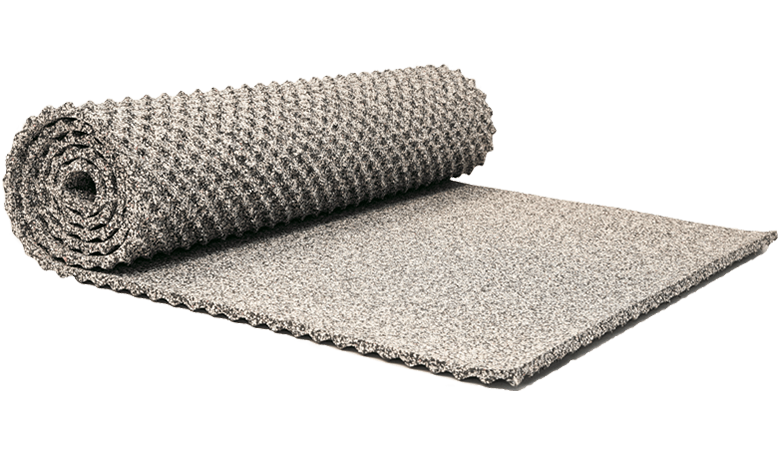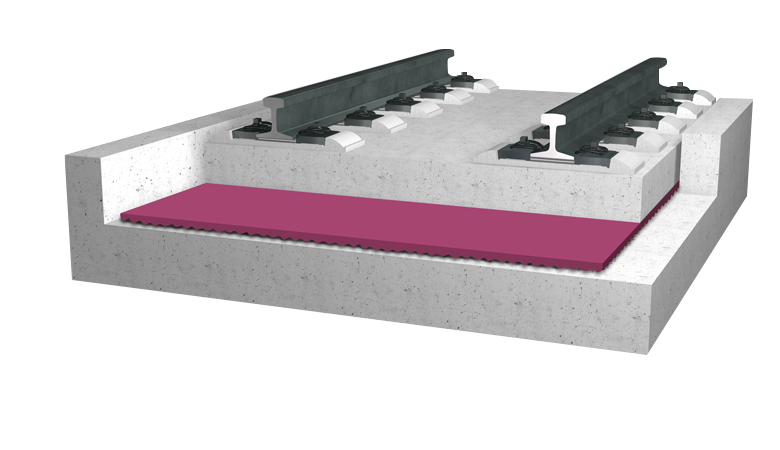Terms and factors
relating to elastic elements
Static bedding modulus
With bedding theory, the track is imagined as an infinitely long rod that is laid on a continuous, elastic base. The bedding modulus is the elasticity value of the whole system, rail – railroad tie – ballast – substructure – substrate, and is used to estimate the static deflection of the operating load. This quantity is a measure of the stiffness that must be determined experimentally. The static bedding modulus basically indicates how deep the rail sinks under slow traffic conditions or a stationary train.
The bedding modulus is the ratio of the stress to the deflection. Usually, the secant modulus is measured, for example, between 0.02 N/mm² and 0.10 N/mm² . Alternatively, the tangent modulus can be determined.
Deflection
A distinction must be made between the deflection and subsidence of the elastomer and the rail deflection. The deflection can be determined using the spring characteristics and is the distance in millimetres by which the material is compressed under a certain tension.
The rail deflection when in use takes into consideration the stiffness in the track superstructure from the vehicle to the substrate. It is calculated statically for the stationary and dynamically for the moving train. Depending on speed, axle load, superstructure type, sub-type and DAMTEC® type, the deflection is usually between 1 mm and 3 mm.
Dynamic bedding modulus
A distinction must be made between the low-frequency (superstructure dynamics) and the high-frequency dynamic bedding modulus (damping of structure-borne noise). With the first-mentioned characteristic value, the bending deformation of the rail under the rolling wheel can be estimated from the interaction of bending elasticity of rails and railroad ties, including ballast.
The higher-frequency dynamic bedding modulus of a ballast mat influences the natural frequency of the elastically mounted superstructure as a vibratory system as a whole and thus the insertion loss. The test is performed with a static preload.

Insertion loss
The insertion loss ΔLe (in dB) is a characteristic value that expresses the extent to which inserted measures contribute to reducing the structure-borne noise introduced into a system. The insertion loss ΔLe is the ratio of the structure-borne sound power “without installed measures” to “with installed measures”. It is a characteristic value of the entire system – from the vehicle to the substructure.
Forecast calculations
Since the mechanisms for the generation and propagation of structure-borne sound associated with rail transport are widely known, the expected effect of mitigation measures can be calculated in advance after a thorough evaluation of the system in the way they are to be used. There are many tried and tested calculation models available for this purpose. The combination of advanced materials that meet all modern requirements for effective sound and vibration protection, as well as the vast experience in implementing more effective measures make DAMTEC® the ideal partner for sound and vibration reduction in the railway sector.

